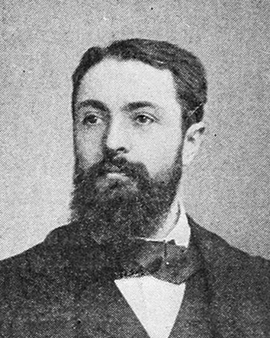


In the colorful cosmos of art, the 19th century produced a remarkable talent, the French painter and illustrator Paul Émile Chabas. Born on March 7, 1869 and died on May 10, 1937, Chabas became a shining star in the firmament of the Académie des Beaux-Arts and contributed to the prestige of French art with his mastery.
Chabas' journey on canvas began in Nantes, where he received his artistic training under the watchful eye of masters William-Adolphe Bouguereau and Tony Robert-Fleury. In 1890, he presented his works to the world for the first time at the Salon, where his luminous talent was recognized. In 1899, he won the coveted Prix National at the Paris Salon with his painting "Joyeux Ébats" and received a gold medal at the 1900 World's Fair. Chabas' artwork, mainly nude young women in natural settings, gave him the title of one of the most important nude painters in Europe. Art prints of his works are still highly appreciated by connoisseurs and lovers of art.
The controversy surrounding Chabas' most famous painting, Matinée de Septembre (September Morning) (1912), created a wave of scandal when Anthony Comstock, secretary of the New York Society for the Suppression of Vice, protested the painting as allegedly immoral. The artist temporarily sought anonymity in the south of France, enraged by the controversy. Despite the public controversy, the art print of "September Morn" was coveted by numerous art collectors and reproductions of the painting sold well for years.
In the 1920s, Chabas illustrated books by well-known authors such as Paul Bourget and Alfred de Musset. In 1921, he became a member of the Académie des Beaux-Arts and received the Legion of Honor in 1928. From 1925 to 1935, he served as president of the Société des Artistes Français. Despite his widespread success, he once mockingly commented that those who had benefited from his work "were not considerate enough to send me even a box of cigars."
When Paul Chabas died in Paris in 1937 after a long illness, he left an impressive artistic legacy. He died in a room where there was only one painting - a copy of "September Morn" that he had painted from memory. To this day, art prints of his works remain a coveted collector's item, both for his lifelike portraits and for the controversial nudes that made him one of the most important artists of his time.

In the colorful cosmos of art, the 19th century produced a remarkable talent, the French painter and illustrator Paul Émile Chabas. Born on March 7, 1869 and died on May 10, 1937, Chabas became a shining star in the firmament of the Académie des Beaux-Arts and contributed to the prestige of French art with his mastery.
Chabas' journey on canvas began in Nantes, where he received his artistic training under the watchful eye of masters William-Adolphe Bouguereau and Tony Robert-Fleury. In 1890, he presented his works to the world for the first time at the Salon, where his luminous talent was recognized. In 1899, he won the coveted Prix National at the Paris Salon with his painting "Joyeux Ébats" and received a gold medal at the 1900 World's Fair. Chabas' artwork, mainly nude young women in natural settings, gave him the title of one of the most important nude painters in Europe. Art prints of his works are still highly appreciated by connoisseurs and lovers of art.
The controversy surrounding Chabas' most famous painting, Matinée de Septembre (September Morning) (1912), created a wave of scandal when Anthony Comstock, secretary of the New York Society for the Suppression of Vice, protested the painting as allegedly immoral. The artist temporarily sought anonymity in the south of France, enraged by the controversy. Despite the public controversy, the art print of "September Morn" was coveted by numerous art collectors and reproductions of the painting sold well for years.
In the 1920s, Chabas illustrated books by well-known authors such as Paul Bourget and Alfred de Musset. In 1921, he became a member of the Académie des Beaux-Arts and received the Legion of Honor in 1928. From 1925 to 1935, he served as president of the Société des Artistes Français. Despite his widespread success, he once mockingly commented that those who had benefited from his work "were not considerate enough to send me even a box of cigars."
When Paul Chabas died in Paris in 1937 after a long illness, he left an impressive artistic legacy. He died in a room where there was only one painting - a copy of "September Morn" that he had painted from memory. To this day, art prints of his works remain a coveted collector's item, both for his lifelike portraits and for the controversial nudes that made him one of the most important artists of his time.
Page 1 / 1










